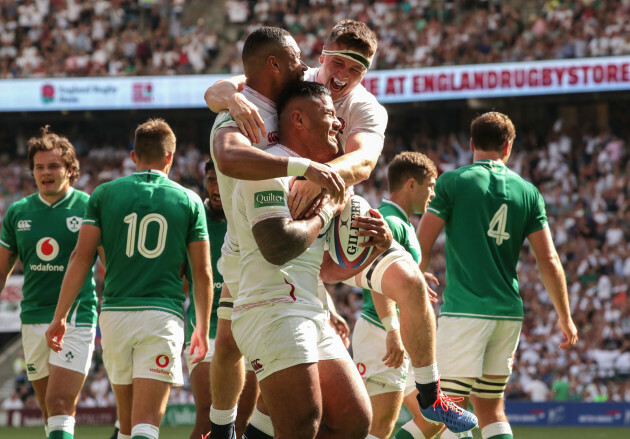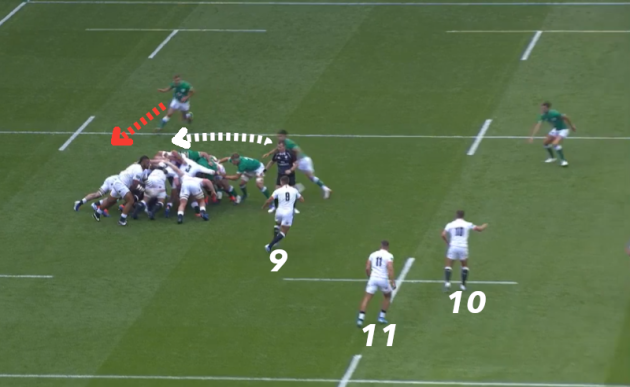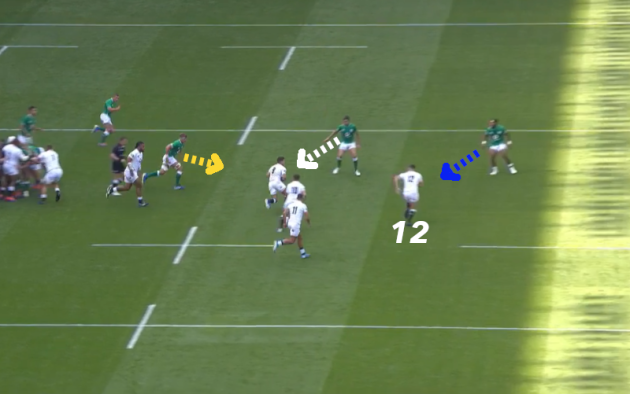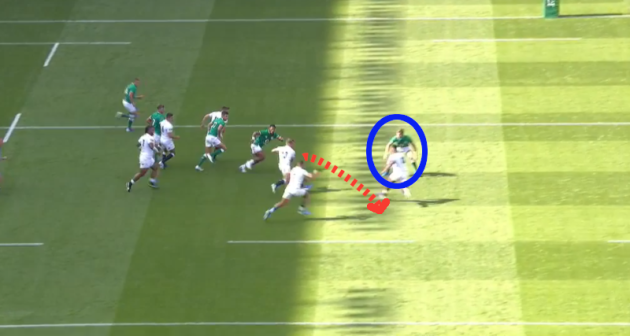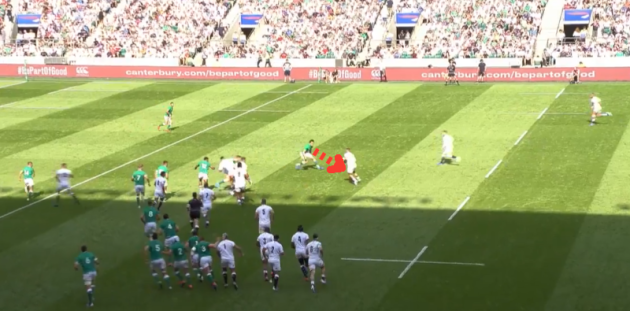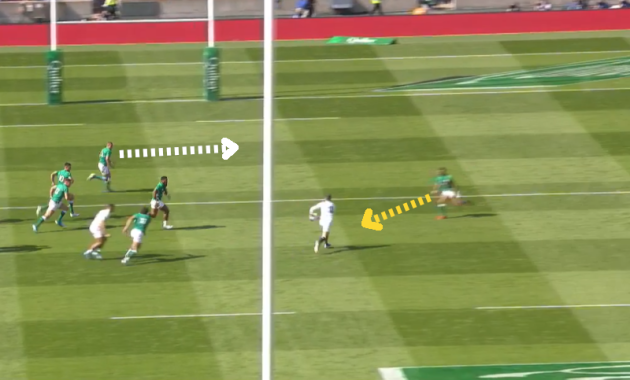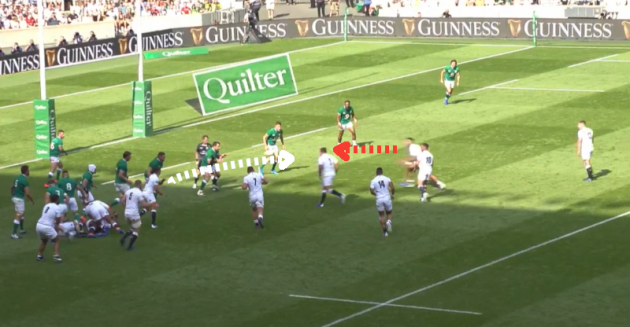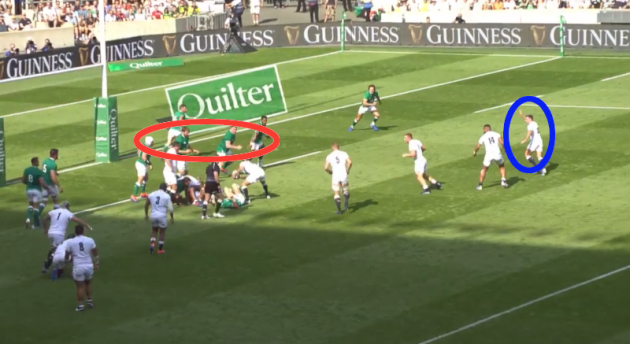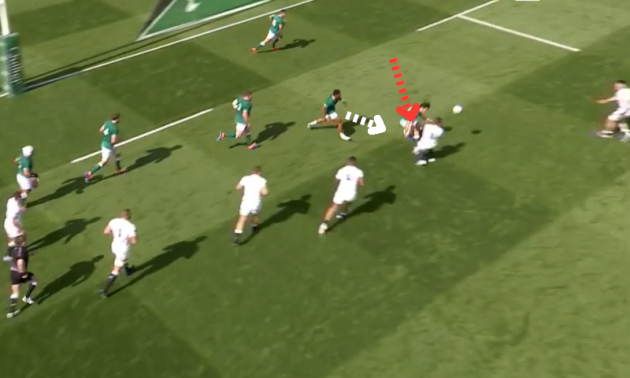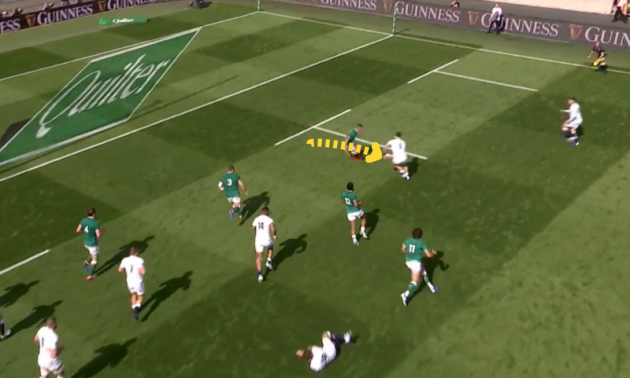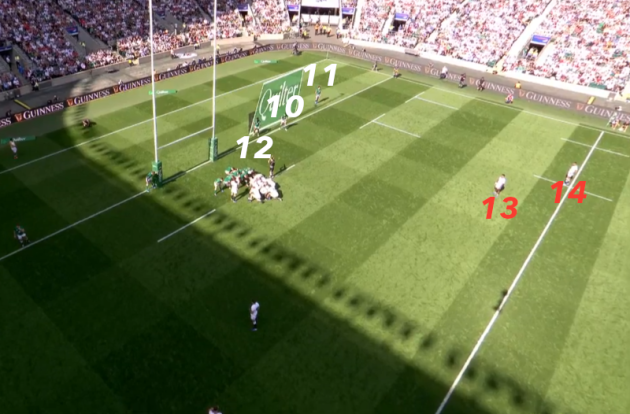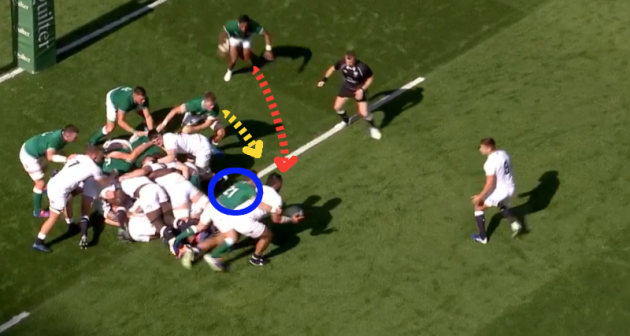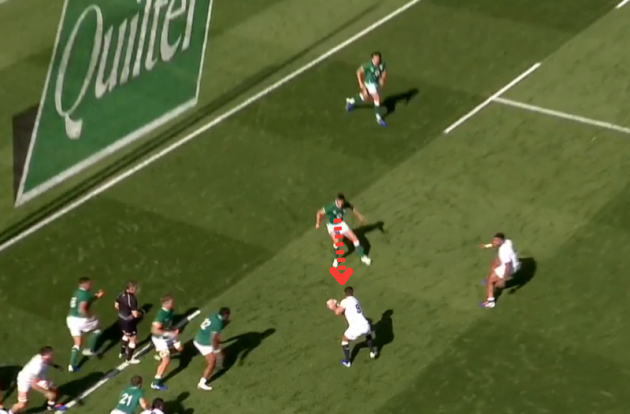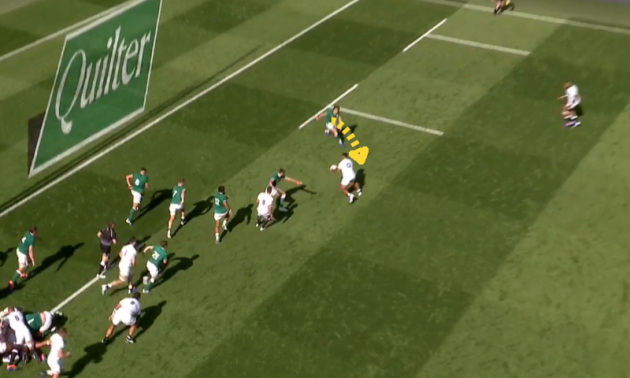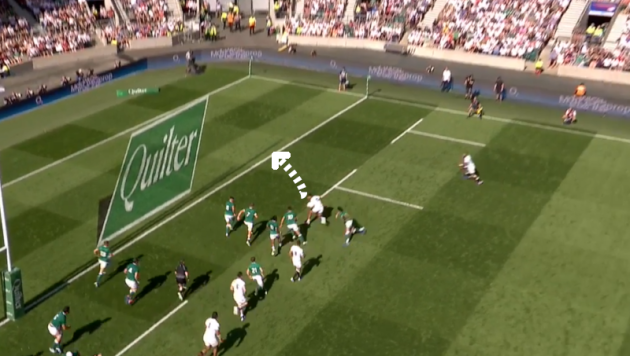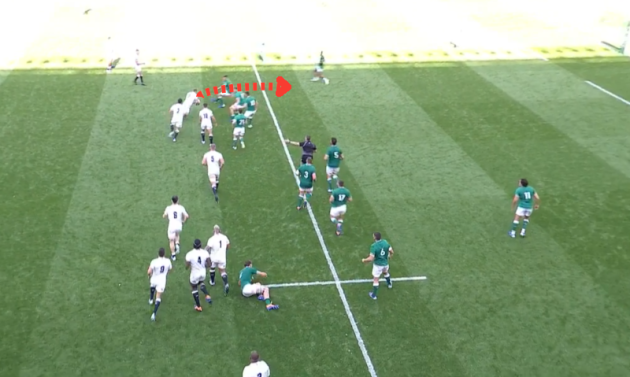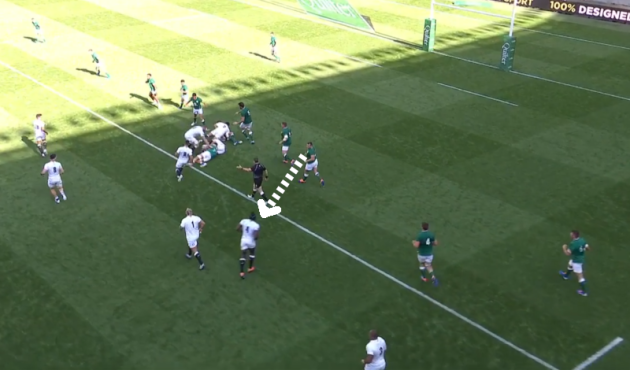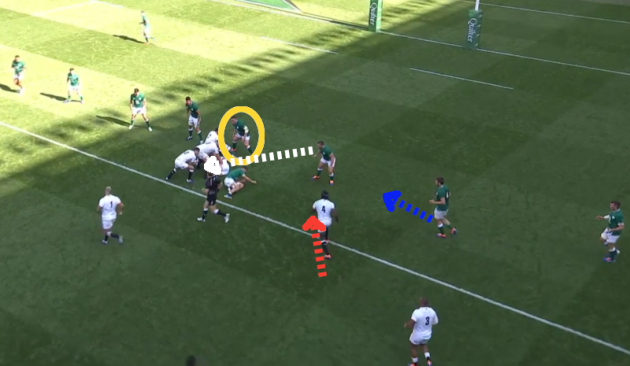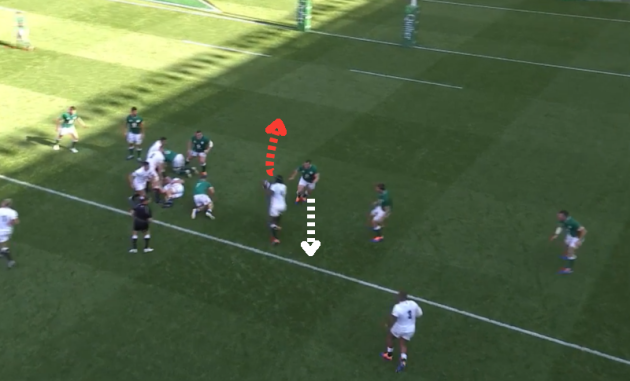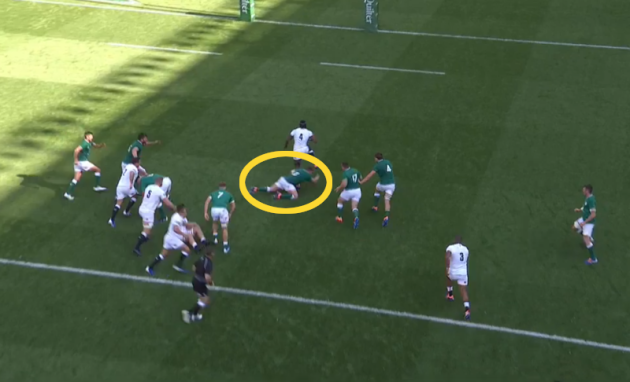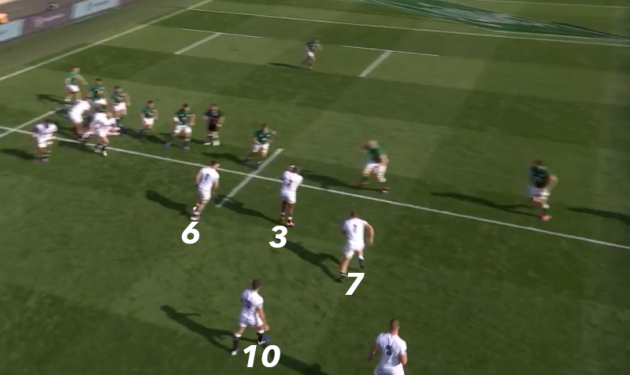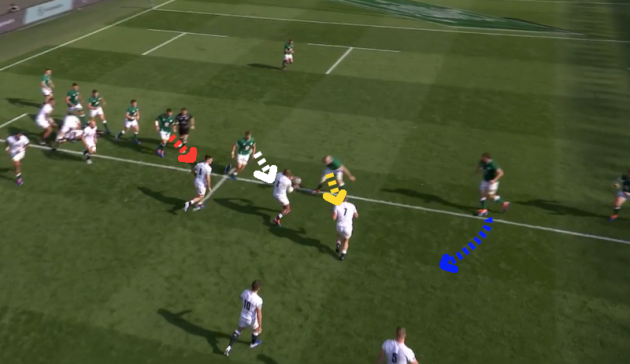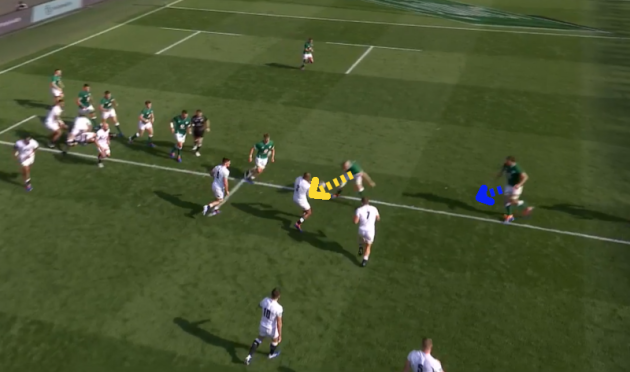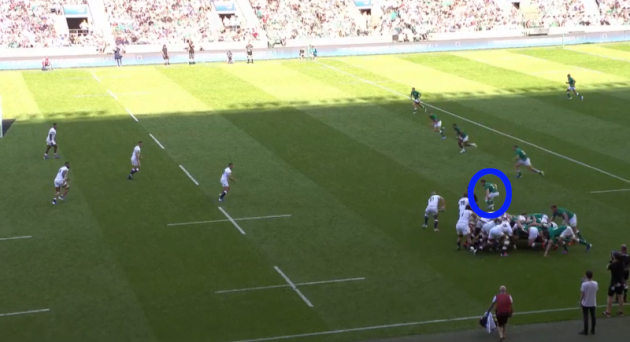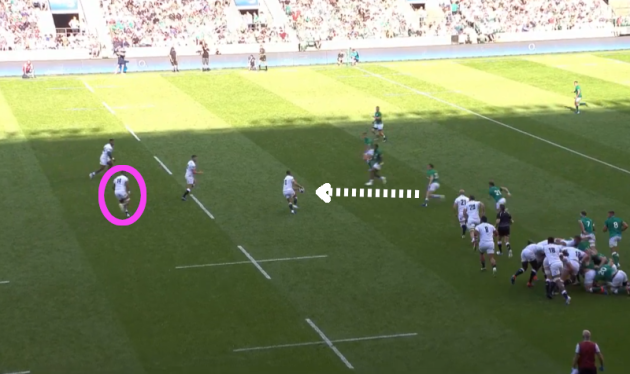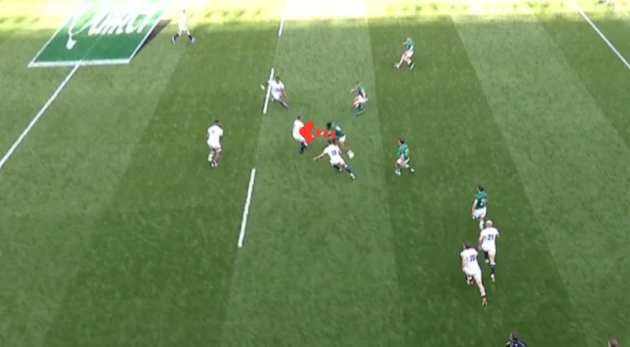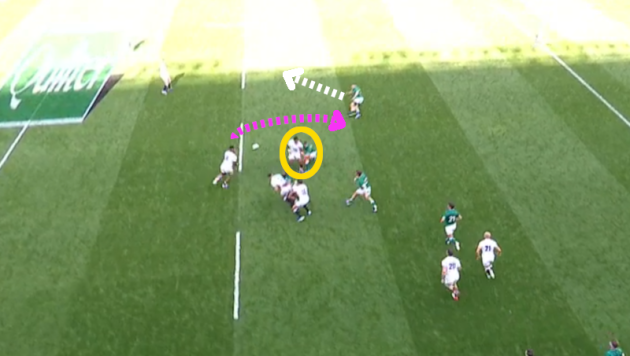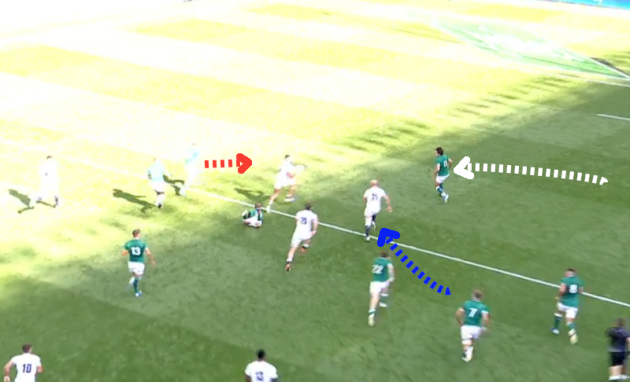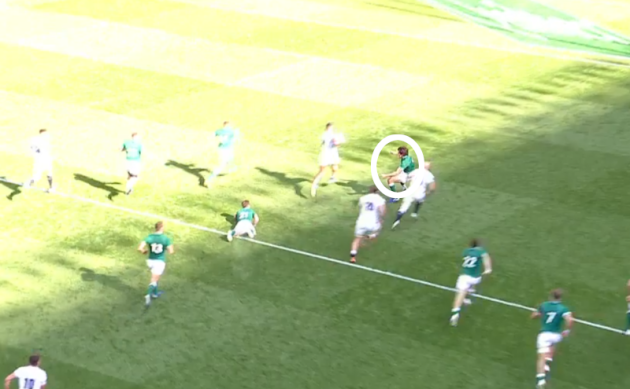THE GOOD NEWS for Ireland is that the lineout and defensive issues they suffered at Twickenham on Saturday are fixable.
Some of the mistakes Ireland delivered would be unacceptable to coaches at much lower levels of the game.
We should stress that England’s performance was outstanding in all aspects and underlined their World Cup credentials, but Joe Schmidt will be focusing on his own team’s shortcomings – with plenty of evidence to choose from.
The lineout was perhaps the worst it has ever been in Schmidt’s time in charge, meaning forwards coach Simon Easterby and his key leaders in the pack will be working hard to ensure it never malfunctions like that again.
Those set-piece issues were deeply damaging in Twickenham, while the defensive performance was a shitshow of epic proportions.
Defence coach Andy Farrell has never seen his charges torn apart in this fashion, leaving him with lots of work to do before the World Cup.
It is true that most of Ireland’s starting team were playing their first game of the new season, but they defended like they hadn’t ever played together at times.
The fatigue of a heavy eight-day training camp in Portugal certainly played a part in some of Ireland’s shortcomings but to concede basic scores as easily as they did will have been unacceptable to Schmidt, who tore strips off his team in the changing room afterwards.
The defensive horror show will have been chief among a particularly uncompromising Schmidt analysis review. England scored their first try in the 13th minute and they barely took the foot off the gas thereafter, tearing Ireland apart for eight tries in total.
Here, we look at six of those English tries.
Joe Cokanasiga
For England’s first score, Ireland’s issues start directly at the source of the ball around a scrum, as we can see below.
Having initially shifted to the openside after Ben Youngs’ feed into the scrum, scrum-half Conor Murray begins to move back into the blindside channel [white] as Billy Vunipola picks the ball up.
At the same time, blindside wing Jordan Larmour advances up [red], clearly also worried about a blindside attack.
But Youngs [9] is already pushing off the scrum on the openside, while England’s blindside wing Jonny May [11] has tucked in behind out-half George Ford [10].
Ireland appear to be worried about Vunipola carrying down the blindside but there is also flanker Peter O’Mahony to come off that side of the scrum, as well as number eight CJ Stander if required.
Simply put, Ireland waste bodies in the blindside and already now they’re playing catch-up.
Without Murray on his inside shoulder, Ireland out-half Ross Byrne now has to worry about Youngs [indicated in white below], as openside flanker Josh van der Flier [yellow] can’t get off the side of the scrum quick enough to mark up on the England nine.
Had Byrne had a viable defender on his inside here, getting across to Young, the Ireland out-half could have turned his attention outwards to England’s Owen Farrell [12] running a hard decoy line.
Instead, the chain effect sees Bundee Aki [blue above] having to respect Farrell’s run, in case Youngs slips him a short flat pass.
But Youngs goes out the back of Farrell to Ford with a screen pass and though Aki slides beyond Farrell, he’s now playing catch-up on Ford, rather than being able to drift out beyond him again.
The chain effect continues as Garry Ringrose now sits down on Manu Tuilagi [blue below], worrying about the short pass from Ford to the powerful outside centre.
Instead, Ford uses a second screen pass [red] to find May out the back door and suddenly there is a real opportunity.
With Elliot Daly and Joe Cokanasiga outside May and half the width of the pitch for them to work with after England have held the interior defence so well, Ireland now have to scramble well to survive. Instead, they concede.
Jacob Stockdale is left in a tough position on the edge of the frontline defence. He could potentially sit off May here, backing down the pitch in a bid to allow those inside him to reconnect, before drifting off.
Instead, he hammers inwards on May, hoping to tackle him ball-and-all and stop the attack dead.
We don’t know if this is what Ireland’s defensive system under Andy Farrell calls for but, based on previous evidence, that would seem to be the case. Ireland regularly try to shut the ball down when exposed on the edges, rather than playing it safe and sitting off.
May’s brilliant handling here sees him get the ball away just before Stockdale makes contact, allowing Daly to draw in Ireland fullback Rob Kearney, who also opts to hammer inwards [yellow below].
We can see that Larmour [white above] is tracking across in the backfield, and blindside wings should always be working hard to provide a safety net in instances like this one.
However, Larmour has been delayed by initially advancing up in the blindside channel at the scrum and he can’t make up the distance as the powerful Cokanasiga gets the ball with huge space to run diagonally into.
The England wing fends Larmour as he finishes a superbly-executed backline play.
From Ireland’s point of view, however, this kind of score is deeply disappointing to concede.
“Certainly, the first one was really an error on the inside and then we were playing catch up out wide,” said Schmidt. “It was really well worked by them but our defence coming out off the scrum wasn’t as good as it needs to be and once that happens you’re in a tough position.”
Elliot Daly
Being down to 14 men with Conor Murray on the ground injured certainly didn’t help Ireland for the second English try, but again they will be disappointed with their efforts.
England’s attacking play throughout this passage is sublime, as they offload out of tackles, constantly forcing Ireland to work hard in defence, until the fatigue finally tells with Murray out of play.
The second last phase is crucial, as Tuilagi comes on a hard, direct line [red below] off Young’s long pass [white] that attracts both Ringrose and Cian Healy into the tackle.
Farrell makes a superb clearout to ensure quick ball and the opportunity beckons as Ireland are slow to fold around the corner.
That lack of urgency, as well as Tuilagi’s superb carry, leaves Ireland very narrow to the ruck [red below], as Ford [blue] signals for the wide pass.
Again, Stockdale is left in a tough situation on the left edge, with Ford having two players outside him in Tom Curry and Daly.
Again, he opts to bite up and in [red below] onto the ball in a bid to stop it in Ford’s hands with a dominant tackle.
Sitting off and trying to drift close to your own tryline is obviously not ideal, with the opposition so close to scoring obviously, but Aki might wonder if he could have got to Ford [as indicated in white above] had Stockdale worked outwards.
Ireland have obviously had success from their edge defenders shooting up and in aggressively in recent years – think of Stockdale’s intercept tries during the 2018 Grand Slam – but there could possibly be more balance here, whether it is a systems or individual issue.
In this case, Ford has the ability to get the ball away and Curry can draw up Kearney [yellow below] before feeding Daly for the score.
Kearney makes neck contact with Curry after the England flanker has passed the ball here and is lucky to avoid being carded.
Manu Tuilagi
This was another hugely disappointing scrum score from Ireland’s point of view, with England barely having to work for their seven points.
As we can see below, England keep Tuilagi [13] and Cokanasiga [14] on the right-hand side of the midfield scrum.
Ireland position Aki [12], Byrne [10] and Stockdale [11] on that side of the scrum, aware that England could use Vunipola and Youngs breaking off the scrum to their right.
Aki is positioned as the first defender off the scrum, with Ireland obviously worried about the threat of Vunipola carrying off the base – Leinster couldn’t handle him in the Champions Cup final last season from a similar position.
But Aki ends up being too concerned about Vunipola, to Ireland’s detriment.
As indicated in red below, Aki shoots up and in as Vunipola scoops the ball off the ground, committing early on to tackling the England number eight.
But with van der Flier [yellow] breaking from the scrum into that same space and replacement scrum-half Luke McGrath [blue] actually tackling Vunipola as he instead passes the ball to Youngs, Ireland are committing three defenders onto Vunipola.
Aki has no eyes on Youngs breaking off the scrum and now that means Byrne has to turn in on the England scrum-half [red below].
With Youngs shifting the ball on to Tuilagi, Stockdale is once again left in a very tricky situation.
Tuilagi is the threat on the ball, of course, but Cokanasiga is lurking wide.
Stockdale has initially moved up into the passing channel between Tuilagi and Cokanasiga but the attempts to readjust inwards [yellow].
He is essentially in no man’s land, however, and will have been disappointed not to even get a shoulder on Tuilagi to slow him.
Instead, Tuilagi is able to break through and evade the clutches of CJ Stander, coming from the back of the scrum, to score England’s damaging third try soon before half-time.
It’s simply too easy for England and Farrell will have been frustrated at his players not making the hosts at least work harder for their score.
Maro Itoje
Having ended the first-half in a weak manner, Ireland started the second in shambolic form as another botched lineout allowed England back into attack mode just outside the Ireland 22.
Reacting positively to mistakes – winning the next moment – has been a big focus for Ireland under Schmidt, but here they concede a try within a phase of the lineout malfunction.
With Rory Best’s lineout throw having escaped Iain Henderson at the tail of the lineout, Ford scoops the ball up and feeds flanker Sam Underhill for a carry [red below].
It’s a strong carry from Underhill into van der Flier’s tackle and it takes England over the 22-metre line, with Ireland’s forwards now having to retreat slightly to set themselves up defensively.
It’s all too slow from Ireland here, as they react very poorly to their lineout error.
As the Irish forwards move, we can see that replacement loosehead prop Jack McGrath initially gets his head up to scan [white below], seemingly spotting the threat of Itoje.
But that’s the last time McGrath sees Itoje until it’s too late.
As we can see below, Tadhg Furlong [yellow] sets up in behind the ruck, rather than directly at the fringe of it.
McGrath now begins to worry about Youngs sniping and we can see that his gaze is directed at the England scrum-half [white below].
He’s not aware of the clever line Itoje has picked [red], coming back across McGrath into the space to the right of the ruck – which Furlong hasn’t quite filled.
Henderson is still moving into position [blue above] after falling to the ground at the lineout, but there doesn’t appear to be any communication from him to McGrath inside about the threat Itoje now poses.
So as Youngs picks Itoje out on that intelligent line and McGrath does get his head back out from the ruck, the Ireland prop [white below] is already advancing beyond Itoje [red] and can’t react to engage in a tackle.
Furlong attempts to get across from the ruck to tackle Itoje low [yellow below] but he misses the tackle against the explosive England lock.
Ireland don’t have any cover in behind either, with fullback Kearney having swept across to his right after Underhill’s carry, seemingly concerned about a wide attack on that side. Stockdale, meanwhile, is wide on Ireland’s left – tracking England right wing Cokanasiga in that area.
It’s another shockingly easy try for Ireland to concede at Test level.
Tom Curry
After Eddie Jones’ team have scored again through George Kruis at the end of a multi-phase attack that caught Ireland narrow on their right edge, England’s next try wasn’t much better from Ireland’s point of view as a simple and superbly-executed tip-on pass cut them apart.
Having started at a scrum on the halfway line, England again run through their impressive phase play and leave themselves in a situation where they’re coming off the left-hand touchline.
Basic and well-executed shape from England dismantles Ireland. We can see that the outstanding Kyle Sinckler [3] – who has made a sharp link pass only seconds before – is in the middle of a three-man pod.
Flankers Curry [6] and Underhill [7] are either side of him as viable receivers of a pass from Sinckler after replacement scrum-half Willi Heinz has hit the skillful tighthead prop.
Out the back, Ford [10] is also a possible receiver of a pullback pass from Sinckler.
Defensively, Ireland are poorly organised, with their spacing an issue here.
Classically, we might have seen Ireland defend in the manner indicated below, with van der Flier [white] dealing with Sinckler, Toner taking Underhill [yellow], while O’Mahony [red] plugged the inside and Henderson [blue] worried about a pullback pass.
Instead, we see Toner turning in on Sinckler here.
As indicated below, the Ireland lock looks to hit Sinckler [yellow] but the tighthead is clever enough to tip the ball on to Underhill on his right.
With that spacing between Toner and Henderson initially very wide, the Ulsterman can’t adjust inwards to deal with Underhill bursting into clear space.
Now, we don’t know for sure what Ireland’s defensive system in phase play calls for each player to do – who to mark up on in these instances – but we can say with certainty that there is a major disconnect between the defenders in this instance, with poor organisation allowing a clean linebreak where one really shouldn’t happen.
As Underhill breaks through [white above], it’s also disappointing for Ireland that Curry [red] is able to get in behind so cleanly too.
There is no effort from O’Mahony or McGrath on the inside to impede or slow his progress through to support Underhill, meaning the openside can simply draw in last man Larmour and feed his back row partner for another England try.
Joe Cokanasiga’s second
Ireland’s woes on scrum defence returned for England’s seventh, as they struck on first-phase for yet another all-too-easy score.
On this occasion, it’s a right-hand-side scrum for the English, meaning Ireland scrum-half McGrath will be in play as a defender on the openside.
Heinz does a good job, however, picking the ball from the scrum and taking just a couple of steps to hold McGrath from drifting immediately out.
That means that Ireland out-half Jack Carty will be initially dealing with opposite number Ford [indicated in white below], which isn’t a major issue at this stage if Ireland’s midfield defence work together.
Blindside wing Cokanasiga [pink above] is already in motion behind the England midfield, so Ireland should be well aware that there is the threat of a pullback pass here, most obviously from Farrell at 12.
As Ford passes the ball to Farrell in the shot below, that should trigger Ireland’s midfield defence into shifting out a man, essentially sliding onto the next attacker rather than the man they had initially marked up on.
In this case, that would mean Carty drifting onto Farrell [white below], Aki shifting out to Tuilagi [red] and Ringrose tracking Cokanasiga out the back door [yellow].
Ireland are coming forward at pace at the same time, making it trickier obviously, and we can see that Aki and Ringrose are already slightly ahead of Carty on the inside, creating an early disconnect.
Aki then makes the decision to go and engage Farrell [red below], rather than drifting off him and leaving Carty to make any possible tackle on Farrell.
As Aki goes to hit Farrell, though, the England centre has the skill to release his pass to the outside.
Because Aki bites down on Farrell, Ringrose at 13 is left with a split-second decision to make – track Tuilagi’s direct run for a possible short pass, or slip past him to deal with Cokanasiga on a possible screen pass from Farrell.
As ever, Farrell superbly disguises his true intention with his hard-to-read body language and Ringrose opts to respect Tuilagi’s line, worrying about the England 13′s sheer power, and bites down on him [yellow below].
Farrell instead superbly releases the ball out the back of Tuilagi to allow Cokanasiga to steam into space [pink above], with Ireland’s next defender – Andrew Conway – having been in drift mode [white above] outside Ringrose, concerned about Daly and May out wide.
Cokanasiga scorches through into space and again the Irish backfield can’t redeem the situation.
Heinz has run an intelligent pre-emptive line after his initial pass to take him up to Cokanasiga’s inside [blue below].
Larmour [red above] is attempting to track back after initially sweeping over to the right-hand side of the backfield, worried about England launching a wide attack from the scrum.
Larmour is quick but he’s not in realistic position to catch the thundering Cokanasiga, leaving Stockdale as the only hope for Ireland after tracking across [white above] from Ireland’s left-hand side.
Heinz is a worry, of course, but Stockdale is likely to feel he could have at least engaged into contact with Cokanasiga here, forcing the England wing to test his skills with an inside pass or offload.
Instead, Stockdale [white above] looks to get into the passing channel between Cokanasiga and Heinz, hoping for an intercept, but the England wing simply dummies and strides clear to score.
In truth, the damage had already been done with a simple screen play to take Ireland’s midfield apart.
“They undid us with that one through the middle from a very basic play from Owen Farrell going in behind 13 and Cokasinga getting the space through the middle,” said Schmidt. “So, there’s some pretty big frustration there.”
The eighth English try came directly from yet another botched Ireland lineout, this time on their own five-metre line. Those set-piece issues need to be fixed urgently ahead of the World Cup.
The defence, meanwhile, was dire in London, although everything we have seen here is certainly fixable. These kinds of errors would not be expected from elite Test rugby players.
Schmidt spoke about how Ireland were “really disappointed with the lack of connection” in their defence and they now need to remedy these issues rapidly before taking on Wales in Cardiff.
- This article was updated at 2.46pm to amend the numbering on the screenshot of England’s set-up to the right of the scrum before Manu Tuilagi’s try.
